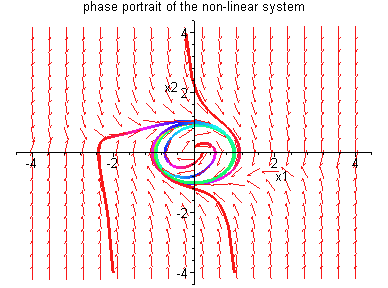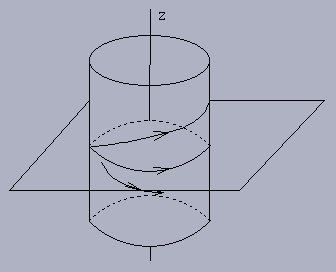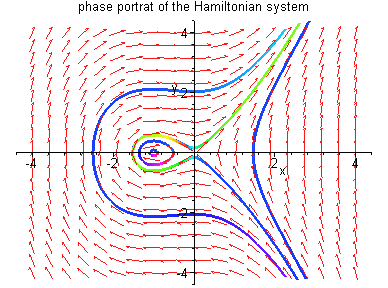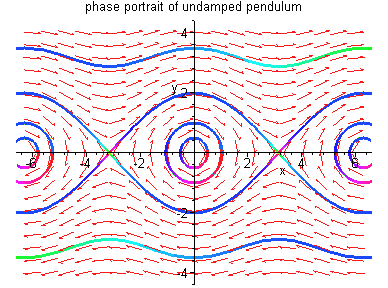| |
(4.1) |
As is seen in Section 3.6, a Hamiltonian system can admit a family of periodic solutions which is dense in some closed set in Rn. Of great interest is the case where a differential system admits an isolated periodic solution, i.e. the orbit has a neighbourhood which contains no other periodic orbits. This is, in fact, only possible for a nonlinear system. In this situation, the periodic solution may attract nearby solutions, thereby describing a physical system which has an oscillatory steady state.
Consider the nonlinear system
Example 4.1.1: Consider the nonlinear system
![\begin{displaymath}\gamma : \left\{ \begin{array}{l}
x_{1} = \sin t, \\
x_{2} = \cos t, \quad t \in [0,2 \pi ] \, . \end{array}\right.
\end{displaymath}](img812.gif)

Definition 4.1.1: An isolated periodic solution
![]() of (4.1) is called a limit cycle if there
exists a neighbourhood U of
of (4.1) is called a limit cycle if there
exists a neighbourhood U of ![]() such
that
such
that
![]() for any
for any
![]() .
.
In the study of periodic solutions in R2, it is
convenient sometimes to use polar coordinates. For
instance, if we let
![]() and
and
![]() in Example 4.1.1, then system
(4.2) reduces to
in Example 4.1.1, then system
(4.2) reduces to


On the other hand, ![]() if
if ![]() and
and
![]() ,
i.e.
,
i.e. ![]() is
decreasing. This together with the fact
is
decreasing. This together with the fact
![]() when
when
![]() implies that the periodic
solution
implies that the periodic
solution ![]() attracts all other nonzero
solutions.
attracts all other nonzero
solutions.
Definition 4.1.2: A periodic orbit ![]() of (4.1) is called
of (4.1) is called
Clearly, system (4.2) in Example 4.1.1 has a ![]() -periodic solution which is asymptotically stable.
-periodic solution which is asymptotically stable.
Example 4.1.2: The system

The next examples describe two important types of orbits that can occur in a dynamical system: homoclinic orbits and heteroclinic orbits.
Example 4.1.3: Consider the Hamiltonian system
The phase portraits of system (4.5) are shown on the right. The curve

Example 4.1.4: The following undamped pendulum

To conclude this section, we state a theorem on stability of periodic solutions for 2-dimensional systems whose proof is omitted. See A.A. Andronov, et al., ``Theory of Bifurcations of Dynamical Systems on a Plane'', 1971.
Theorem 4.1.1: Let
![]() be an open set and
be an open set and
![]() .
Let
.
Let
![]() ,
,
![]() be a periodic
solution of (4.1) of period T. Then the periodic
solution
be a periodic
solution of (4.1) of period T. Then the periodic
solution ![]() is asymptotically stable if
is asymptotically stable if


Example 4.1.5: Consider the periodic solution
![$\gamma : \left\{ \begin{array}{l} x_{1} = \sin t, \\
x_{2} = \cos t, \quad t \in [0,2 \pi ] \end{array} \right.$](img848.gif) in Example 4.1.1. Since
in Example 4.1.1. Since
